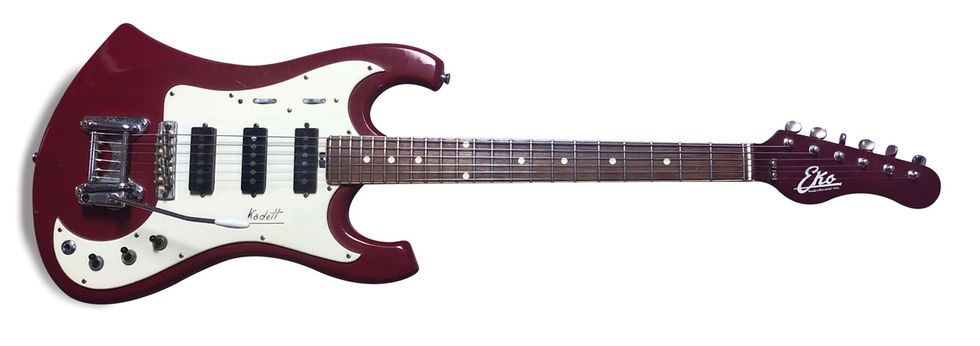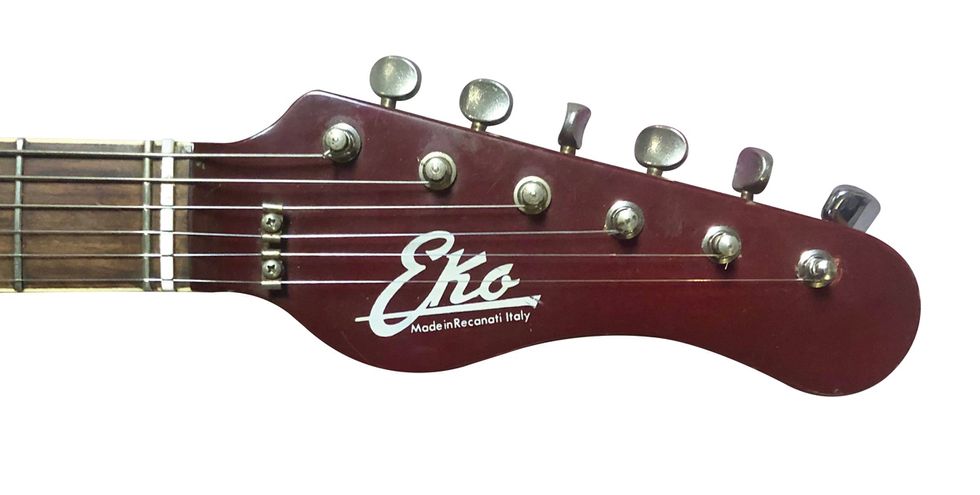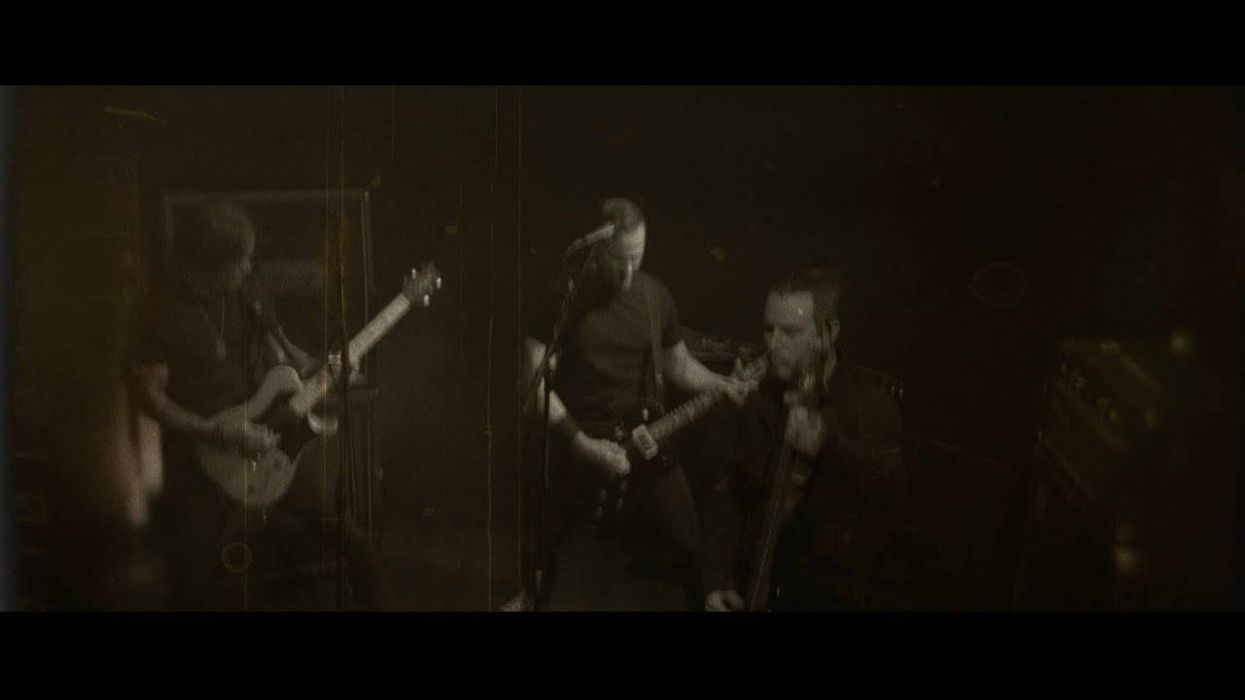I know a lot of you have your idols and altars when it comes to favorite players and guitars. I think about one of my old high school buddies, who, after graduation, went from looking like a football player to sporting long, curly hair à la Kirk Hammett. He also had the same amp, same guitar, and same effects setup.
Looking back, I think of other players I’ve known—like, “he’s a Strat guy,” or “she’s into P-90s,” or something else that sort of defined them. Would you believe there’s a large swath of players who find themselves in the Eko camp? How many of you even know about Eko guitars?
Initially, I only knew of Eko guitars because of the characteristics that usually draw me in: sparkle finishes, a bunch of pickups, and crazy shapes. But it wasn’t until I started frequenting guitar shows up and down the East Coast that I came to find a small but focused group of Eko enthusiasts. These kindly people span the U.S. and beyond, and soon enough I was enjoying correspondence with fanatics from Texas, Kentucky, Vermont, and Wyoming. I’ve never reached their rabidity, but I did always enjoy the passionate guitar talk and admired this group’s tenacity. They really loved Ekos, and through them I learned a whole bunch of random facts and theories, all strung together with love by people who were part storyteller, part sage, and part eccentric.
Eko is a rather long-running Italian brand name that stretches back to 1959, when it was founded by Oliviero Pigini. Similar to Shiro Arai in Japan, Oliviero started importing guitars to Italy and eventually started making his own in the late ’50s and early ’60s. The early Eko designs were something to behold, because they were extreme in just about every way. Push-button multi-controls and tricked-out finishes were the selling points, and these early designs led to even more experimentation with body shapes and outrageous cutaways as the ’60s wore on.
Eko guitars sold in relatively small numbers here in the U.S., but the guitars weren’t cheap! Many of their models were priced equal to, or, in some cases, higher than Fenders and Gibsons. And when most companies were folding or selling off assets as the guitar boom ended, Eko was busy building new facilities. In one of the 1967 Eko catalogs, Oliviero even touted his new factory as “one of the world’s largest,” featuring “unbelievable advances in research, development, and sparkling new manufacturing techniques.”
Among the new Eko models to emerge from that era was the Kadett (Photo 1). Its standout design featured a sharp sweep of the upper-body bout that combined nicely with its sawed-off horns (Photo 2), and it became a long-running guitar that retailed for $365 in 1967. This model was even copied by Kawai as a green-burst monster that often featured four gold-foil pickups and a Kimberly name badge.
Photo 2
These little screamers are well-balanced—both in weight and tone—and if you can find one with a nicely tuned vibrato bridge, you will be impressed by it. The pickups have some nice bite and the electronics are a bit simpler than the Kimberly, and thus a bit more practical. I enjoy these Kadett guitars more than most of the Eko models from the same era. Plus, the red color on this guitar was one of the sleeker finishes offered at the time. Fire-engine times 10!
In general, Eko guitars were always built rather well, but I think the solidbodies hold up better than their hollowbody cousins. Either way, the Eko cult is always on the lookout for slight variations in models. Certain colors, body shapes, and pickup combinations are prized above others. You Wisconsinites out there should rejoice because, back in the day, the famous Lo Duca Brothers in Milwaukee served as the main Eko pipeline to the states. I’m certain there are some legendary Eko guitars living the good life in closets and storage rooms up north!
Tonight, I’m going to pour a glass to all those cool Eko fanatics I knew back in the day, and their fascination with the extreme and obscure. The pre-internet days were certainly adventurous, and if you had a Kadett slung on your shoulder, you were about to become a member of a nice little club, whether you realized it or not.
See and hear this 1969 Eko Kadett demoed by Mike Dugan.


















